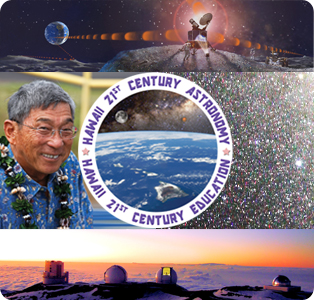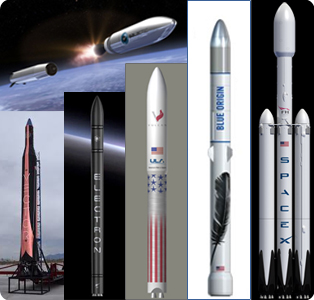Hawaii Island Mayor Harry Kim Addresses Global Future of Maunakea at ILOA Galaxy Forum in Kona
The International Lunar Observatory Association (ILOA) is hosting Hawaii Mayor Harry Kim for a community talk session with the theme “Maunakea and Hawaii 21st Century Astronomy” at Galaxy Forum Hawaii 2017 Kona on Saturday April 8, 09:30-11:30am at the King Kamehameha Hotel. Mayor Kim has generously agreed to make a feature presentation outlining his transcending vision of Aloha for a Maunakea World Park, a gift for the World from Cosmopolitan People of Hawaii. Island communities, educators, scientists, teachers, schools, universities, and astronomical observatories now have a very challenging opportunity and responsibility regarding the future of Maunakea and Hawaii 21st Century Astronomy and Education. The whole world is looking to Hawaii, as the best place culturally, scientifically, geographically and spiritually to launch on these voyages of exploration of the farthest reaches of our cosmic ocean. Kim has said “Maunakea can be and should be a monument for the World, especially at this time, for mankind’s quest of knowledge to make us a better people.” ILOA is working on near-term opportunities for that kind of quest. The ILO-1 Mission to advance 21st Century astronomy, education and communication from the Moon is being conducted from Hawaii with support from spacecraft provider Moon Express of Florida, USA, and primary instrument contractor Canadensys Aerospace of Ontario, Canada, as well as National Astronomical Observatory of China, India Space Research Organization, and others. (Image Credit: ILOA, Space Age Publishing Company, B. Adams) |
MONDAY Ongoing…
|

![]() = All times
= All times
for terrestrial events in local time unless noted.
![]() = All times for international terrestrial events in local time unless noted.
= All times for international terrestrial events in local time unless noted.
![]() = All times for space events, and…
= All times for space events, and…
![]() = All times for international space / astro events in Hawaii Standard Time unless noted. Add 10 hours to obtain UT (‘Universal Time;’ Greenwich, England).
= All times for international space / astro events in Hawaii Standard Time unless noted. Add 10 hours to obtain UT (‘Universal Time;’ Greenwich, England).
Weekly Planet Watch – Evening Planets: Mercury (W), Mars (W), Jupiter (ESE); Morning Planets: Venus (E), Saturn (S).
Next-Gen Rockets from Super Heavy-Lift to Microsat Launch Vehicles
|
Continued from…
|
TUESDAY
![]() NET Apr 4 — ISRO, Launch GSLV Mk. 2 / GSAT 9, Satish Dhawan Space Center, Sriharikota, India: India Geosynchronous Satellite Launch Vehicle Mk. 2, flying on GSLV-F09 mission, to launch GSAT 9 satellite to provide communications services over India and neighboring countries.
NET Apr 4 — ISRO, Launch GSLV Mk. 2 / GSAT 9, Satish Dhawan Space Center, Sriharikota, India: India Geosynchronous Satellite Launch Vehicle Mk. 2, flying on GSLV-F09 mission, to launch GSAT 9 satellite to provide communications services over India and neighboring countries.
![]() Apr 4 — Keck Institute for Space Studies, Caltech, Pasadena CA: The Glass Ceiling and The Glass Universe; Dava Sobel – New York Times bestselling author.
Apr 4 — Keck Institute for Space Studies, Caltech, Pasadena CA: The Glass Ceiling and The Glass Universe; Dava Sobel – New York Times bestselling author.
![]() Apr 4 — Lunar and Planetary Laboratory, University of Arizona, Tucson AZ: Colloquium: The Late Lunar Dynamo; Sonia Tikoo, Assistant Professor at Rutgers University, 15:45.
Apr 4 — Lunar and Planetary Laboratory, University of Arizona, Tucson AZ: Colloquium: The Late Lunar Dynamo; Sonia Tikoo, Assistant Professor at Rutgers University, 15:45.
![]() Apr 4-6 — Applied Technology Institute, Columbia MD: Satellite Communications Design; taught by Chris DeBoy, RF Engineering Group lead at Johns Hopkins University Applied Physics Laboratory.
Apr 4-6 — Applied Technology Institute, Columbia MD: Satellite Communications Design; taught by Chris DeBoy, RF Engineering Group lead at Johns Hopkins University Applied Physics Laboratory.
![]() Apr 4 — Apollo Asteroid 2017 EB3: Near-Earth Flyby (0.035 AU).
Apr 4 — Apollo Asteroid 2017 EB3: Near-Earth Flyby (0.035 AU).
WEDNESDAY
![]() NET Apr 5 — Arianespace, Launch Soyuz / SES 15, Kourou, French Guiana: Arianespace Soyuz rocket, designated VS17, to launch SES 15 communications satellite for SES of Luxembourg.
NET Apr 5 — Arianespace, Launch Soyuz / SES 15, Kourou, French Guiana: Arianespace Soyuz rocket, designated VS17, to launch SES 15 communications satellite for SES of Luxembourg.
![]() Apr 5 — ISS, LEO: Reboost scheduled to place station in correct altitude for departure of three Expedition 50 crew members April 10.
Apr 5 — ISS, LEO: Reboost scheduled to place station in correct altitude for departure of three Expedition 50 crew members April 10.
![]() Apr 5 — Cassini, Saturn Orbit: Flyby of Pandora scheduled at 40,000-km altitude, Atlas at 66,000 km, Epimetheus at 111,000 km.
Apr 5 — Cassini, Saturn Orbit: Flyby of Pandora scheduled at 40,000-km altitude, Atlas at 66,000 km, Epimetheus at 111,000 km.
![]() Apr 5 — Goddard Space Flight Center, Greenbelt MD: Colloquium: Volatiles and Ices in the Polar Regions of Mars – The Future is LIDAR; Adrian Brown from GSFC, 15:30.
Apr 5 — Goddard Space Flight Center, Greenbelt MD: Colloquium: Volatiles and Ices in the Polar Regions of Mars – The Future is LIDAR; Adrian Brown from GSFC, 15:30.
![]() Apr 5 — Moon: 3.8° S of Beehive Cluster, 02:45.
Apr 5 — Moon: 3.8° S of Beehive Cluster, 02:45.
THURSDAY
![]() Apr 6 — ISS, U.S. EVA 42, LEO: Astronauts Kimbrough and Pesquet to perform 6.5-hour spacewalk for Multiplexer/De-Multiplexer (MDM) and ExPRESS Logistics Carrier (ELC-4) work.
Apr 6 — ISS, U.S. EVA 42, LEO: Astronauts Kimbrough and Pesquet to perform 6.5-hour spacewalk for Multiplexer/De-Multiplexer (MDM) and ExPRESS Logistics Carrier (ELC-4) work.
![]() Apr 6 — ExoMars Trace Gas Orbiter, Mars Orbit: ESA craft to perform last aerobraking burn today bringing craft low point of orbit to 113 km from 200 km.
Apr 6 — ExoMars Trace Gas Orbiter, Mars Orbit: ESA craft to perform last aerobraking burn today bringing craft low point of orbit to 113 km from 200 km.
![]() Apr 6 — British Interplanetary Society, London, United Kingdom: Lecture: The Last Man on the Moon – A Tribute to Gene Cernan; Mark Craig, director and co-producer of feature documentary The Last Man on the Moon.
Apr 6 — British Interplanetary Society, London, United Kingdom: Lecture: The Last Man on the Moon – A Tribute to Gene Cernan; Mark Craig, director and co-producer of feature documentary The Last Man on the Moon.
![]() Apr 6 — Deep Astronomy, American Astronomical Society, American Astronautical Society, Online: Hangout Live: Footsteps to Mars: Safe When They Arrive; starts 15:00 EDT, featuring Tony Darnell, Harley Thronson, Alberto Conti of NASA with Arnauld Nicogossian (George Mason University) and Charles Doarn (University of Cincinnati).
Apr 6 — Deep Astronomy, American Astronomical Society, American Astronautical Society, Online: Hangout Live: Footsteps to Mars: Safe When They Arrive; starts 15:00 EDT, featuring Tony Darnell, Harley Thronson, Alberto Conti of NASA with Arnauld Nicogossian (George Mason University) and Charles Doarn (University of Cincinnati).
![]() Apr 6, 7 — JPL, Caltech/NASA, Pasadena CA: von Kármán Lecture Series 2017: Harnessing the Sun’s Light to Explore Our Planet and Universe; Mark Helmlinger of JPL.
Apr 6, 7 — JPL, Caltech/NASA, Pasadena CA: von Kármán Lecture Series 2017: Harnessing the Sun’s Light to Explore Our Planet and Universe; Mark Helmlinger of JPL.
![]() Apr 6 — Moon: 0.7° S of Regulus, 18:30.
Apr 6 — Moon: 0.7° S of Regulus, 18:30.
![]() Apr 6 — Apollo Asteroid 2017 FU64: Near-Earth Flyby (0.010 AU).
Apr 6 — Apollo Asteroid 2017 FU64: Near-Earth Flyby (0.010 AU).
![]() Apr 6 — Amor Asteroid 2017 DC38: Near-Earth Flyby (0.038 AU).
Apr 6 — Amor Asteroid 2017 DC38: Near-Earth Flyby (0.038 AU).
![]() Apr 6 — Aten Asteroid 2014 FN38: Near-Earth Flyby (0.064 AU).
Apr 6 — Aten Asteroid 2014 FN38: Near-Earth Flyby (0.064 AU).
FRIDAY
![]() Apr 7 — Royal Astronomical Society, London, United Kingdom: Meeting: Science with Cubesats; Meeting: Synergies between Intensity Mapping and Optical Galaxy Surveys.
Apr 7 — Royal Astronomical Society, London, United Kingdom: Meeting: Science with Cubesats; Meeting: Synergies between Intensity Mapping and Optical Galaxy Surveys.
![]() Apr 7 — Jupiter: At opposition, 11:00.
Apr 7 — Jupiter: At opposition, 11:00.
![]() Apr 7 — Apollo Asteroid 2017 FS102: Near-Earth Flyby (0.020 AU).
Apr 7 — Apollo Asteroid 2017 FS102: Near-Earth Flyby (0.020 AU).
SATURDAY
![]() Apr 8 — ILOA, Galaxy Forum, Space Age Publishing Company, Kailua-Kona HI: Galaxy Forum Hawaii – Kona: Maunakea and Hawai’i 21st Century Astronomy / Education; featuring Hawaii Mayor Harry Kim, ILOA Director Steve Durst, Astronomy / Galaxy Educator Janine Bonham; 09:30-11:30, King Kamehameha Kona Beach Hotel – Courtyard Marriott.
Apr 8 — ILOA, Galaxy Forum, Space Age Publishing Company, Kailua-Kona HI: Galaxy Forum Hawaii – Kona: Maunakea and Hawai’i 21st Century Astronomy / Education; featuring Hawaii Mayor Harry Kim, ILOA Director Steve Durst, Astronomy / Galaxy Educator Janine Bonham; 09:30-11:30, King Kamehameha Kona Beach Hotel – Courtyard Marriott.
![]() Apr 8 — Jet Propulsion Laboratory, NASA, Pasadena CA: Rockets and Flight – Educator Workshop; for teachers grades 4-12 to get students using the engineering design process to investigate the principles of flight.
Apr 8 — Jet Propulsion Laboratory, NASA, Pasadena CA: Rockets and Flight – Educator Workshop; for teachers grades 4-12 to get students using the engineering design process to investigate the principles of flight.
![]() Apr 8-9 — Spaceport America, MH Enterprises LLC, Las Cruces NM: Spaceport America Relay Race; with Virgin Galactic Chief Astronaut Instructor Beth Moses.
Apr 8-9 — Spaceport America, MH Enterprises LLC, Las Cruces NM: Spaceport America Relay Race; with Virgin Galactic Chief Astronaut Instructor Beth Moses.
![]() Apr 8 — Aten Asteroid 2016 GH135: Near-Earth Flyby (0.088 AU).
Apr 8 — Aten Asteroid 2016 GH135: Near-Earth Flyby (0.088 AU).
SUNDAY
![]() Apr 9 — ISS, 330-435-km LEO: Expedition 50/51 Change of Command Ceremony; Shane Kimbrough hands over ISS Command to Peggy Whitson, making her the only female to command the station twice; she is also 1st female to ever command ISS, the oldest female space walker, holds record for most ever EVAs (8 in total) performed by a female astronaut.
Apr 9 — ISS, 330-435-km LEO: Expedition 50/51 Change of Command Ceremony; Shane Kimbrough hands over ISS Command to Peggy Whitson, making her the only female to command the station twice; she is also 1st female to ever command ISS, the oldest female space walker, holds record for most ever EVAs (8 in total) performed by a female astronaut.
![]() Apr 9 — The Space Show, Online / Tiburon CA: Dr. David Livingston hosts open lines for callers to discuss Space and related topics.
Apr 9 — The Space Show, Online / Tiburon CA: Dr. David Livingston hosts open lines for callers to discuss Space and related topics.

